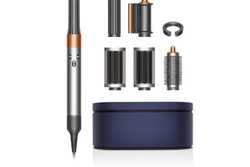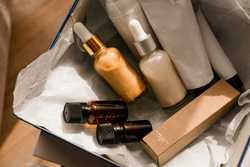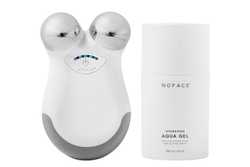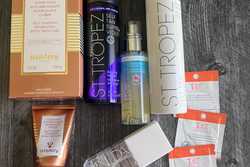How to Get Rid of Redness on Your Face
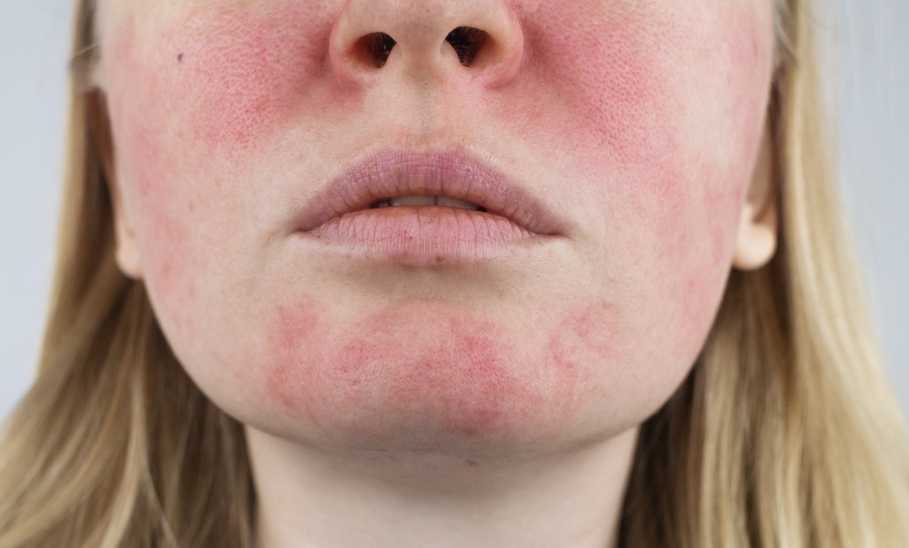
Our evaluations and opinions are not influenced by our advertising relationships, but we may earn a commission from our partners’ links. This content is created by TIME Stamped, under TIME’s direction and produced in accordance with TIME’s editorial guidelines and overseen by TIME’s editorial staff. Learn more about it.
Your skin is the largest organ of your body, but unlike your heart and stomach, it’s exposed to much more outside elements—literally. Germs, bacteria, temperature fluctuations, harsh weather, and irritants are some of things your skin protects you from.
As a result, it can become damaged easily, and one sign you might notice is redness. This redness can be especially noticeable on your face. I reached out to dermatologists, Melanie Palm, MD, MBA, and Anne Truitt, MD, to tell me more.
Figuring out the true cause of facial redness may call for an exam by a healthcare provider. Dr. Palm says other potential symptoms, lifestyle factors, and a person’s medical history should also be considered when trying to sort out what is causing the redness. Dr. Palm and Dr. Truitt say there are several reasons why you might have redness on your face.
Acne causes redness and breakouts on your face. The redness is usually contained around the acne blemish itself. Acne can look similar to another skin condition called rosacea, which I’ll talk about later, and it can be hard to tell the difference between the two. Acne happens when hair follicles are clogged with dead skin cells and oil. You might think of acne being something only teenagers deal with, but it can happen in your adult years as well.
“Blotchiness can be the result of rosacea, a skin condition that causes a long-term flushed look on the face that can flare up regularly,” says Dr. Palm. No one really knows why rosacea happens to some people, but your genetics, immune system, and certain triggers in the environment, such as sun exposure, might be the culprit.
Besides facial flushing, rosacea can also cause skin to feel hot and have a burning sensation.
Known as atopic dermatitis, eczema is a rash that can look red and feel dry, itchy, and scaly. It usually starts in childhood, but it can be a life-long issue. An eczema rash tends to come and go. When the eczema is worse, it’s known as a flare up. When the rash clears up, it means you’re in remission. Your odds of eczema are worse if you have a family history or have asthma.
Eczema patches can show up on different parts of the body, including the skin under or around your eyes. Seborrheic dermatitis is a form of eczema that looks similar to dandruff. But it can also affect your face, particularly on your nose, eyebrows, and eyelids.
The Centers for Disease Control and Prevention (CDC) says sunburn symptoms can start about four hours after exposure. They can cause warm red skin, blisters, and even headaches and nausea. Sunburn is caused by ultraviolet (UV) light from the sun’s rays and can damage the skin’s collagen, which gives skin its tightness. If you don’t protect your skin, not only can you develop a sunburn, but it can give you premature wrinkling and put you at risk for skin cancer.
According to Dr. Palm, red blotches may be an early indicator of pre-cancer spots called actinic keratosis if you have long-term or increased sun exposure. These might feel like rough patches, but can start out as red or tan patches.
Heat rash can happen in hot and humid weather when sweat gets trapped inside your skin, according to Mayo Clinic. A heat rash can look like tiny prickly blisters or even small lumps under the skin. It usually goes away on its own when you’ve cooled off, but sometimes, it might need to be treated by your healthcare provider.
According to the American Academy of Dermatology, your face can be a common area where irritants or allergic reactions show up. Soaps, hair dyes, latex, fragrances, and things like poison oak or poison ivy can all cause skin reactions known as contact dermatitis.
This rash can show up within a few days of being exposed to the offender, and treating it means finding out the cause. The Mayo Clinic suggests placing a cold compress on the area to help soothe the itch and redness. It should clear up in two to four weeks if you stop using the irritant.
“If you’re suddenly experiencing red blotches and you’ve never had them before, I recommend consulting with a physician or a board-certified dermatologist to get an accurate diagnosis,” says Dr. Palm.
According to Dr. Palm, if you see red blotches on your face, it might mean you have hives. Hives can be caused by several factors, such as:
Hives cause welts on the skin that can itch. These welts can be small dots or large raised patches. Most of the time, they go away on their own within 24 hours, according to the Mayo Clinic. If hives are related to a particular food or medication, it might be more serious, and you may need to see a healthcare provider or even go to the hospital for treatment.
Facial redness can look different depending on what is causing the redness. It can look like numerous small red bumps that could mean you have acne, heat rash, or hives. It might look like a red patch that indicates sunburn, eczema, or hives. Skin flushing can affect a larger part of your face and can also cause your skin to feel warm. Flushing can be caused by several factors that I’ll talk about below.
Some skin conditions, such as rosacea, can cause flushing, but there are also other explanations for why your skin might flush.
Have you ever noticed your cheeks look flushed after drinking alcohol? This is because alcoholic beverages get converted to a chemical called acetaldehyde in your body after alcohol is metabolized by the liver. It’s this acetaldehyde that causes facial flushing.
As with alcohol, it’s not the actual food that can cause flushing, but spicy foods are known to heat up your face. The chemical compound capsaicin is found in chili peppers and gives them their spice. It may add a kick to your nachos, but this chemical can also stimulate your skin to feel warm, tingly, and flushed.
Sudden cold on your face causes your blood vessels to constrict or narrow, so your body doesn’t lose heat. When those vessels relax and widen again, it can cause your skin to look flushed.
When your body gets warmer all of a sudden, it can cause the tiny blood vessels near the skin’s surface to dilate to eliminate that sudden heat. It’s your body’s way of protecting you, but it can also cause unwanted flushing.
This explains why your cheeks look flushed when you leave a warm house into freezing outdoor weather or when you enter a sauna. It also explains why hot flashes before, during, or after menopause cause a woman to overheat and need to fan her face.
Menopause can cause hot flashes due to fluctuating hormone levels. Lower estrogen levels in a woman’s body can make her more sensitive to temperature changes. When she suddenly feels too warm, her body reacts quickly to cool her and causes a hot flash, leaving her feeling warm and sweaty.
Skin care tools such as facial steamers and ice rollers can help with redness. Dr. Truitt also recommends therapies such as intense pulsed light (IPL) that can fix redness along with treating wrinkles, unwanted hair, and skin spots. Pulsed dye laser (PDL) treatment can also help reduce redness, says Dr. Truitt. PDLs can help treat the redness that’s caused by dilated blood vessels.
LED face masks are another redness-busting skin treatment that uses wavelengths and colors such as blue and red light. These face masks can address issues such as acne, eczema, wrinkles, and sun damage.

But first, in order to treat redness, you’ll want to first figure out the cause. According to Dr. Palm, it’s important to figure out if facial redness is from a medication or skin allergy or if it’s a trigger for your rosacea.
Dr. Truitt says many causes of facial redness can be blamed on the sun. Wearing sun protection with at least SPF 30 and zinc oxide 9% or higher is a good place to start to heal redness, as well as making sure to wear protective clothing, including a hat, when you’re outside.
According to Dr. Truitt, you can treat some skin conditions, such as rosacea, with over-the-counter (OTC) topical medications such as azelaic acid, brimonidine, or metronidazole. Salicylic acid or glycolic acid are common acne medications. For seborrheic dermatitis, you can try an anti-dandruff shampoo as a face wash.
“Aveeno, Cerave, and Neutrogena make really good products to moisturize and repair the skin barrier,” explains Dr. Truitt. The skin barrier is the outer layer of skin that protects you from irritating substances and bacteria, as well as keeping moisture in.
Dr. Truitt recommends Vanicream, either Vanicream Lite for the face or the cream. This lotion is ideal for people with sensitive skin or allergies.
Unfortunately, getting rid of redness on your face isn’t always a quick fix, says Dr. Truitt. “Cold compresses or a cool clay mask can help. I keep my Origins rose clay mask in the refrigerator.” She adds that using a bland moisturizer with ingredients known to calm and moisturize the skin can help. This can include aloe, caffeine, ceramides, glycerin, hyaluronic acid, and cucumber.

If the redness is related to acne, sometimes using overnight acne patches can help. Dr. Truitt likes the Bright Girl Beauty line for teenagers and young adults because it can be calming to the skin if you have to rotate between OTC or prescription acne medications.
You want to have a good sense of your skin so you can spot when something is not right. According to the Cleveland Clinic, knowing your skin can help you choose skin care products and help treat your skin when products end up being irritating. To understand your skin, think about these factors:
If you have acne, treat it sooner rather than later, advises Dr. Truitt. This can include using acne face wash, benzoyl peroxide, salicylic acid, or glycolic acid. You might also need to use prescription medications.
Calming products help soothe the skin and can include ingredients like aloe vera, calamine, green tea, niacinamide, and vitamin B3, according to Dr. Palm. “Niacinamide and vitamin B3 are anti-inflammatory antioxidants that have been shown to improve facial redness,” Dr. Palm says. Sulfur-based products can also help reduce irritation and help with redness.
When you have sensitive skin, avoid products with fragrance, alcohol, or formaldehyde, says Dr. Truitt. And until the redness has completely gone away, Dr. Palm says to stay away from products that have exfoliating properties. This includes retinol, alpha-hydroxy acid (AHAs), and beta-hydroxy acid (BHA) until the issue has resolved. Don’t use physical exfoliants on your face as well, such as scrubs, dry brushes, or rough washcloths, adds Dr. Palm.
“While your skin is healing, avoid the sun and washing your face with hot water, which can strip and compromise your skin barrier even further,” says Dr. Palm. Support your skin barrier even more by using moisturizers formulated with hyaluronic acid and ceramides.
“It’s important to preserve your skin barrier by using good skin care habits,” says Dr. Palm. For sun protection and to prevent burns, she recommends a mineral sunscreen like zinc oxide or titanium dioxide.
Gentle physical or chemical exfoliating can be great for the skin and might be a part of your routine skin care regimen. But Dr. Palm says not to overdo it. Exfoliating can strip the skin and damage the skin barrier. “If you’re introducing a new skin care product or ingredient into your routine, patch test it first before applying it all over your face in case you have an allergic reaction,” says Dr. Palm.
Stay away from ingredients that might cause an allergy. “I often have people do a wash-out period with only Vanicream cleansers, lotions, and sunscreens and then slowly add back one of your products at a time to see what might cause a reaction,” explains Dr. Truitt. And of course, if you know a certain medication causes an allergic reaction, make sure you stay away from it.
Some causes of facial redness can clear up on their own or be treated with products you have at home, such as lotions or an OTC medication.
“If you’re experiencing prolonged redness, consult with a board-certified dermatologist to get to the root cause and determine the proper treatment options,” says Dr. Palm. This can also include if you’re having any pain or discomfort, such as what happens when you have rosacea.
And Dr. Truitt recommends seeing a dermatologist if your redness lasts beyond a week or two.
The information presented here is created by TIME Stamped and overseen by TIME editorial staff. To learn more, see our About Us page.
